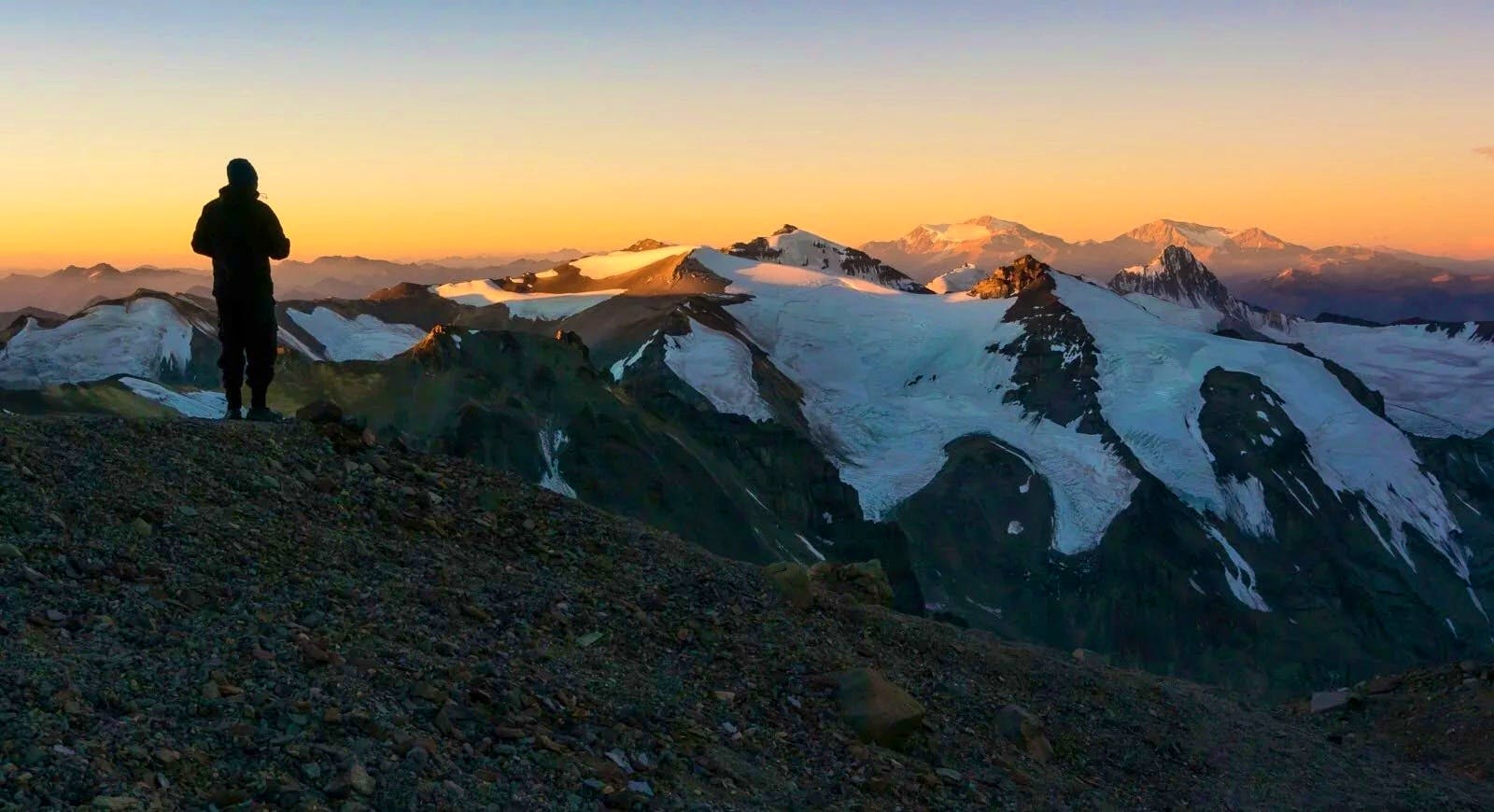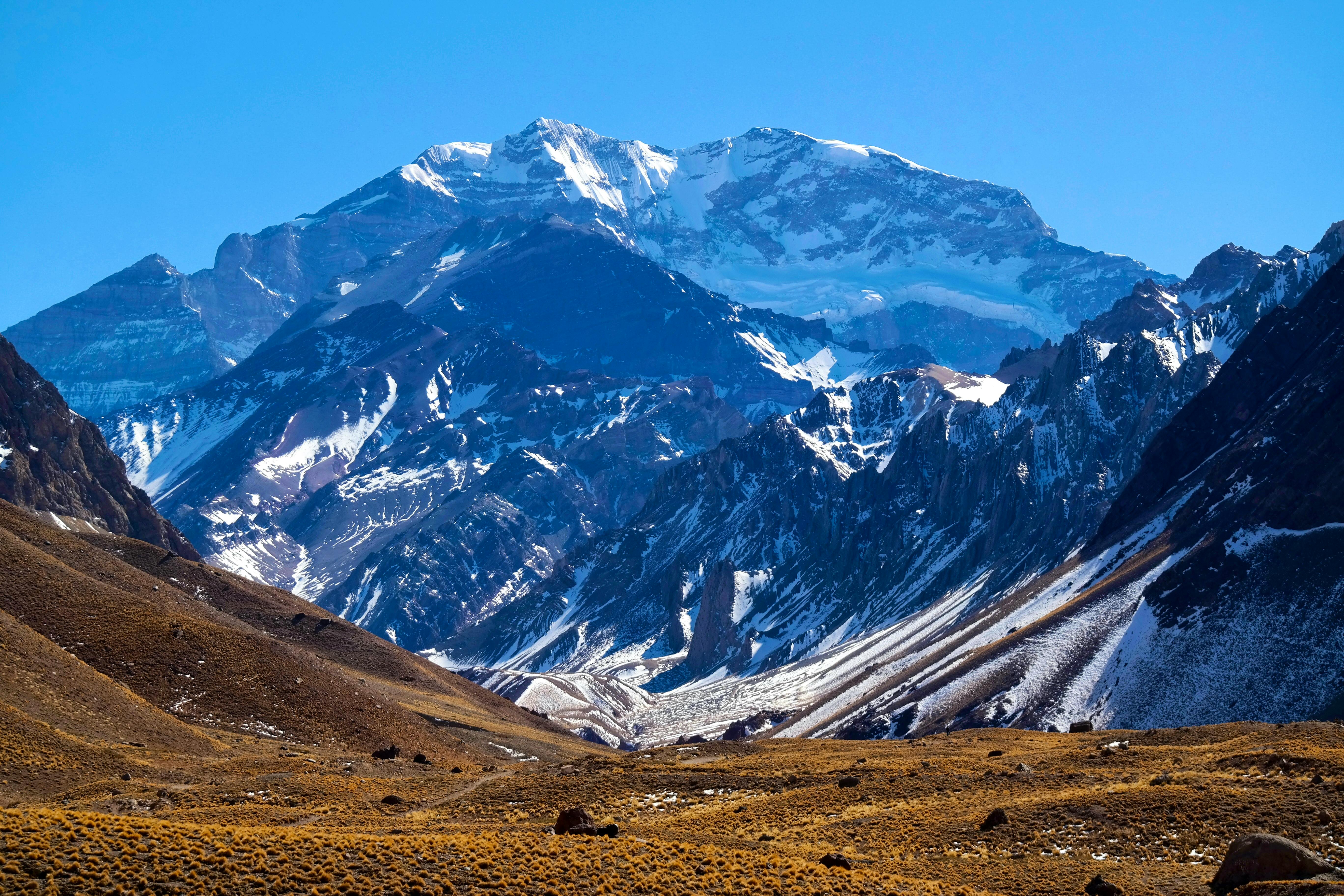Peaking at an elevation of 6,961m above sea level, Aconcagua in Argentina is the second highest of the popular Seven Summits. As one of the most
famous mountains in the world, it's easy to see why it calls to experienced mountaineers.
To tackle this summit, you have to prepare well for all the factors involved; including the finances. We've broken down the overall cost of hiking Aconcagua to help prepare you for this epic journey.
Basic Overall Aconcagua Expedition Cost
The total Aconcagua climb cost varies depending on several factors, including travel, permits, gear, and your choice of tour operator.
Overall, the hike will cost between $3,500 and $6,000 per person, excluding the hiking permit, personal spending money, and other unforeseen expenses. There are ways to ensure that you end up on the lower side of the price scale, so keep an eye out for those tips!
Your Aconcagua hike starts from Mendoza, so you need to factor in the flights to the city.
If departing from the UK, flights typically route through major European hubs such as Madrid or Paris, before connecting to Mendoza via Buenos Aires or Santiago (Chile). Travellers from the US might find direct flights to Santiago or Buenos Aires from major cities, followed by a short flight to Mendoza.
Cost-wise, flights from the UK to Mendoza can vary widely but expect to pay in the region of £600 to £1,200 if you book well in advance.
From the US, the range is somewhat similar, with prices typically between $700 and $1,300 for a round trip. Opting for South American airlines might offer savings compared to European or North American carriers.
How to save: peak climbing seasons may see higher prices and limited availability, so secure your flights months ahead of your intended departure date. Off-season travel is usually cheaper, and we recommend using
Google Flights to find the best deals.
Argentina does not typically require a visa for stays of up to 90 days, but it's always wise to check the
latest visa requirements before you travel, as policies can change. Ensure your passport is valid for at least six months beyond your planned departure date from Argentina to avoid entry issues.
You also need a mandatory Aconcagua hiking permit from the Aconcagua National Park. The cost varies depending on the season you choose to climb, with the high season (December to February) permits costing more than those in the low or shoulder seasons.
On average, expect to pay between $800 and $1,100 for the permit. You will need to purchase your permit physically at the offices in Mendoza, where you'll also register your climb and receive the latest safety briefings and conditions on the mountain.
Remember, the permit fee is in addition to any costs associated with your expedition company.
This fee contributes to the conservation of the Aconcagua Provincial Park, the maintenance of facilities, and the provision of rescue services for climbers' safety on the mountain.
The Aconcagua Provincial Park offers various permits based on the route and season, with the Polish Route and the Normal Route being among the most popular choices for climbers. Note that summit permits are separate from permits for general trekking in the park.
There are two variants of this route that take you to the summit: the Glacier route and the Traverse route. The permits for these two routes are the same.
Note that the Glacier route involves some ice climbing and short-roping.
High season (15 December to 31 January): The permit cost for climbing is around $945.
Mid-season (1-14 December and 1-20 February): The fees slightly decrease to around $727 for the summit trek.
Low season (15-30 November and 21 February to 31 March): Similar costs to the mid-season prices for climbers willing to face the colder conditions.

Latest Deals
Discover trips on sale on Skyhook. Book once-in-a-lifetime adventures at discounted prices.
The Normal Route is more popular than the Polish Route, as it usually does not require technical skills like ice climbing (although some conditions may require the use of ice axes or short roping) and it is easier than the Traverse route.
High season: Permits cost around $800, making it a more affordable option than the Polish Route during the peak of the climbing season.
Mid and low seasons: The permit for the Normal Route also adjusts according to the season, with significant reductions to $582 for these shoulder climbing seasons.
The cost of expeditions offered by guiding companies can vary widely based on what's included in the service, the route chosen, and the inclusion of additional amenities such as porters and high-altitude chefs.
The general Aconcagua cost to climb with tour operators ranges between $3,500 and $5,000.
Skyhook offers an
Aconcagua Guided Climb along the Normal Route at $4,290 in the mid-season and $4,500 in the high season. These costs include professional mountain guides, high-altitude porters for equipment, accommodations in Mendoza, on the mountain, and Penitentes, as well as all food on the mountain and other essentials for a successful climb.
A successful Aconcagua climb is supported by essential gear. These can cost more than $1,000 if you start buying from scratch, but some specialised items can often be found nearby for rent. Whoever you book through should be able to assist with finding rental equipment.
Here are the must-have items:
Clothing: Layering is key to managing the temperature ranges you'll encounter. This includes base layers, insulation layers, and a waterproof and windproof shell. Pack smart to keep the weight you carry up the mountain to a minimum.
Footwear: A sturdy pair of mountaineering boots designed for high-altitude expeditions is essential. These boots should be compatible with crampons and designed to withstand the cold temperatures found at high altitudes.
Sleeping bag: Given the cold nights on Aconcagua, a sleeping bag rated for -35°C or colder is recommended.
Backpack: A durable, high-capacity (60-80 litres) backpack is necessary to carry your gear and supplies.
Sunglasses and goggles: These will protect against Snow Blindness, which is a risk with high-altitude UV exposure, and other damage from continued strain on the eyes. Make sure you have high-quality sunglasses and goggles for eye protection.
Personal medical kit: A comprehensive medical kit is always beneficial so that you are prepared for minor injuries and illnesses on the mountain that could make your climb uncomfortable.
Miscellaneous gear: This includes thermal bottles, gloves, hats, trekking poles, and personal hygiene items.
6. Tipping and Miscellaneous Costs
Tipping your guides, porters, and support staff is customary and greatly appreciated as you'll acknowledge their hard work and dedication to your safety. A general guideline is a tip range of $150 to $300 per client to be divided amongst the entire crew, though this can vary based on the level of service and your satisfaction.
Additionally, you should budget for miscellaneous expenses such as snacks, additional meals in Mendoza, and any unforeseen costs. These can add several hundred dollars to your overall expenditure, but it is always best to have that financial safety net.
7. Training for Aconcagua
Preparing for your Aconcagua expedition may require a dedicated training plan, focusing on both physical fitness and mental resilience. You should start your Aconcagua training plan at least 4-6 months before your climb, and focus on cardiovascular exercises, strength training, and altitude acclimatisation where possible. Even a basic training plan can increase your general costs leading up to the climb.
If you would prefer to take mountaineering courses in preparation for the trek, understand that these can increase your cost of climbing Aconcagua.
How to save: Doing cardio and strength training from home or in your neighbourhood is a great way to save money on physical preparation. We also recommend exploring challenging hiking trails near you.
As we've seen, your Aconcagua climb can come to a total cost of between $3,500 and $6,000 per person. There are many factors that contribute to the variability of this price tag, but be careful when deciding where to opt for cheaper options. Your safety is the number one priority and not something to skimp on.
Other Related Articles from Skyhook


















